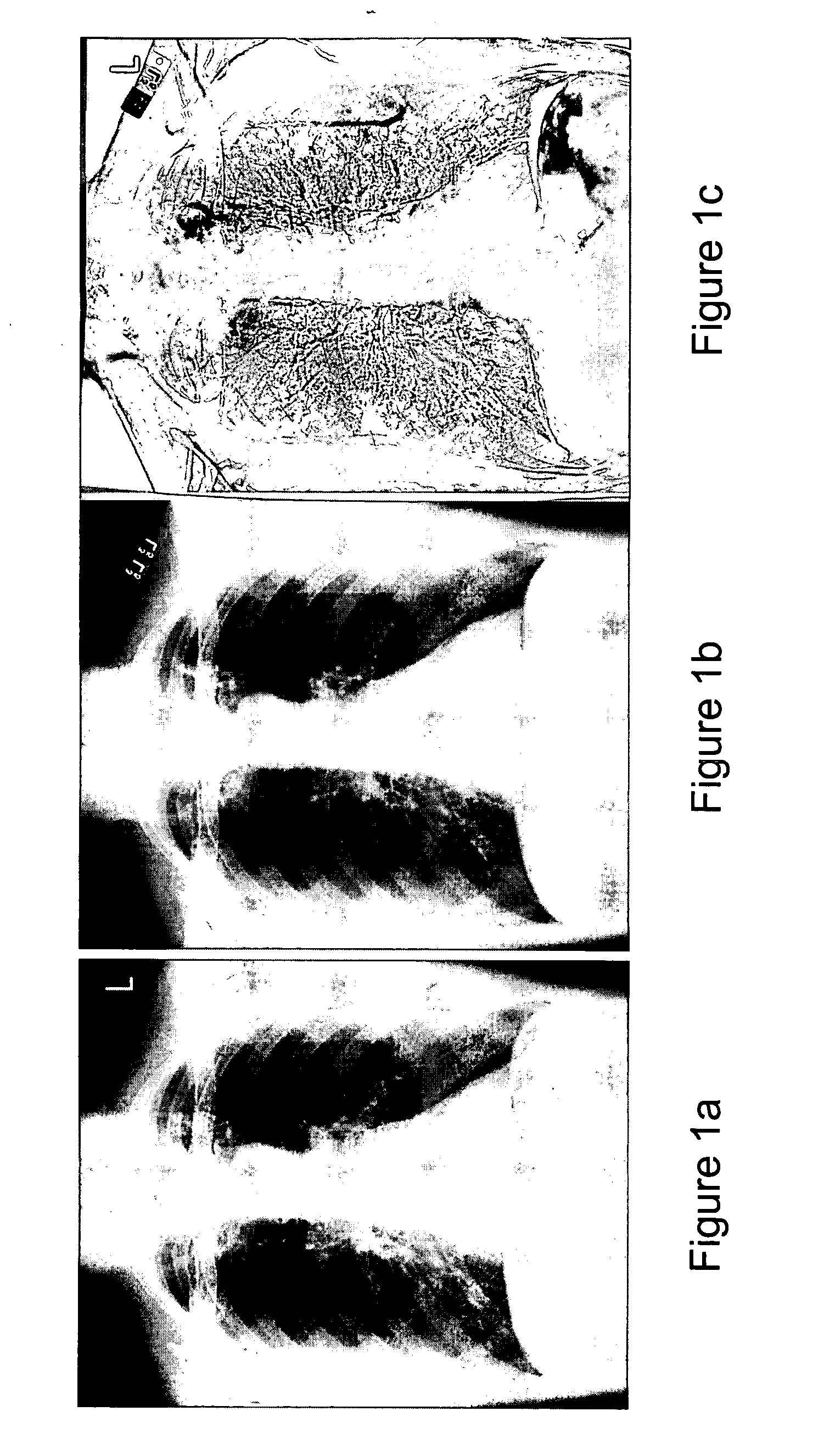Automated method and system for the evaluation of disease and registration accuracy in the subtraction of temporally sequential medical images
- Summary
- Abstract
- Description
- Claims
- Application Information
AI Technical Summary
Benefits of technology
Problems solved by technology
Method used
Image
Examples
first embodiment
[0073] Thus, the method of the first embodiment is summarized in FIG. 8. The method begins with obtaining a temporal subtraction image (S601). This temporal subtraction image is than subjected to a lung mask to extract a lung mask region (S602). The extracted lung mask region is then subjected to spatial smoothing (S603). The spatially smoothed data is then used to construct a gray level histogram (S604). Histogram statistics are then computed (S605). These histogram statistics are used to determine registration accuracy (S699) as well as to select gray level threshold information (S605). From the gray level threshold information, a binary image is constructed (S606). Within the constructed binary image, contiguous regions of “ON” pixels are identified so as to identify regions of interest (S607). Within these regions of interest, geometric and gray level features are extracted (S608). The extracted geometric and gray level features may also be used to determine registration accurac...
second embodiment
[0081] The method of the second embodiment is summarized in FIG. 9. Dual energy images are obtained at separate times (S701A, S701B). Each dual energy acquisition results in a standard image (S701A1, S701B1), a soft tissue image (S701A3, S701B3), and a bone image (S701A2, S701B2). The standard images obtained from the two dual energy acquisition steps are then subjected to temporal subtraction (S702), from which temporal subtraction parameters are obtained (S703). These temporal subtraction parameters are then used in a corresponding soft tissue temporal subtraction (S704A) and / or a bone temporal subtraction (S704B) process. The soft tissue temporal subtraction (S704A) is exercised against the soft tissue images obtained from the two dual energy acquisitions (S701A3, S701B3). Similarly, the bone temporal subtraction process (S704B) is exercised against the bone images obtained from the two dual energy acquisitions (S701A2, S701B2). The soft tissue temporal subtraction data and / or bo...
PUM
 Login to View More
Login to View More Abstract
Description
Claims
Application Information
 Login to View More
Login to View More - R&D
- Intellectual Property
- Life Sciences
- Materials
- Tech Scout
- Unparalleled Data Quality
- Higher Quality Content
- 60% Fewer Hallucinations
Browse by: Latest US Patents, China's latest patents, Technical Efficacy Thesaurus, Application Domain, Technology Topic, Popular Technical Reports.
© 2025 PatSnap. All rights reserved.Legal|Privacy policy|Modern Slavery Act Transparency Statement|Sitemap|About US| Contact US: help@patsnap.com



